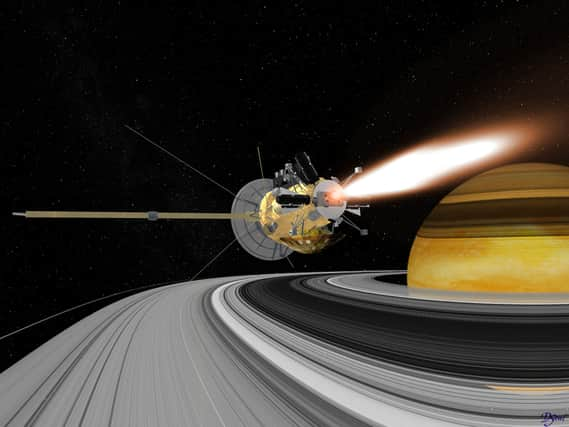Enceladus: 'Organic molecules' spotted coming out of Saturn's moons that could support life
This article contains affiliate links. We may earn a small commission on items purchased through this article, but that does not affect our editorial judgement.


Saturn's moon, Enceladus, has been found to have even more organic molecules than expected after recent research has discovered the plumes coming out of the surface include organic molecules such as methanol, ethane, and oxygen.
Enceladus is already one of the most promising locations for potential life in our solar system as the icy world is active, might have the right temperatures for life as well as having large oceans under its surface.
Advertisement
Hide AdAdvertisement
Hide AdThe discovery was made after researchers re-examined data taken from Nasa’s Cassini spacecraft, which flew past the moon in 2011 and 2012.
Initial observations found that there was water, carbon dioxide, methane, ammonia, and molecular hydrogen in samples taken from those plumes, but after looking once more at the data, and comparing it to a large library of other similar samples, they found that not only did the plumes have those five chemicals, it also included a range of other molecules.
The findings are reported in a new paper, ‘Detection of HCN and diverse redox chemistry in the plume of Enceladus’, published in the journal Nature Astronomy.
The Cassini spacecraft set off from Earth in 1997. It was primarily pointed at Saturn, but also looked at rings and moons that surround it in a large and complex system, studying them in detail until 2017.
Advertisement
Hide AdAdvertisement
Hide AdEnceladus is one of the more intriguing objects in our solar system as it harbours the conditions to support life, and it is also relatively easy to study because of plumes that erupt through its icy surface, shooting out material from beneath so that it can be studied by spacecraft as they fly past.
Comment Guidelines
National World encourages reader discussion on our stories. User feedback, insights and back-and-forth exchanges add a rich layer of context to reporting. Please review our Community Guidelines before commenting.
